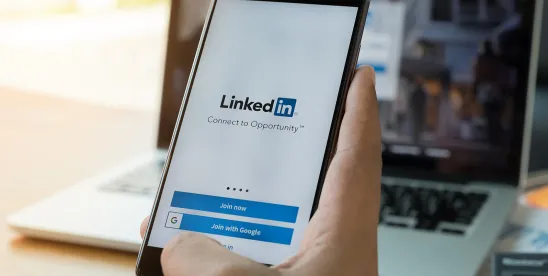We’ve all seen it or experienced it: someone posts on LinkedIn and tags a long list of people in the hopes of getting more attention, comments and shares. On the surface, it may seem like a clever way to increase engagement, but this tactic can often backfire. In fact, it’s one of the biggest LinkedIn faux pas, and if you’ve been on the receiving end of it, you probably know why.
Why Tagging People for Engagement is Annoying
Let’s start with the obvious: being tagged in a post just because someone wants you to engage feels transactional. It’s not a genuine interaction or an invitation to contribute meaningfully. It’s more like, “Hey, I need attention on this post—help me out!” It can be flattering if you’re genuinely connected to the content, but more often than not, it feels like you’re being spammed.
Here’s why it’s problematic:
- Unwanted Notifications: When you’re tagged in a post, you’re suddenly pulled into a conversation you may not care about. Every comment, like or share results in another notification. If you’re tagged in a post with lots of interaction, your inbox becomes flooded with notifications. This can be particularly irritating for busy professionals who already deal with a high volume of messages.
- It Feels Like Spam: Tagging someone in the hopes they’ll engage without a clear reason makes it feel like you’re using them for your own gain. It’s not about building a genuine connection or starting a meaningful conversation—it’s about getting likes and comments. When this happens often, it can erode relationships rather than build them.
- People May Ignore or Mute You: If you make a habit of tagging people without good reason, they might start ignoring your posts altogether. Worse, they could mute or unfollow you to stop the notifications. This is the opposite of what you’re hoping to achieve. LinkedIn should be about building relationships and sharing meaningful content, not trying to game the system for engagement.
Why Tagging People Is Not a Best Practice
When you tag someone in a post, you’re essentially asking for a favor: their time and attention. If you do this without thinking it through, it can come across as lazy or even inconsiderate. Here’s why it’s not an effective strategy:
- It’s Inauthentic: Tagging someone with no connection to the content doesn’t encourage authentic engagement. People can tell when they’re being used to boost your post, and it doesn’t foster trust or meaningful conversation.
- It Can Dilute Your Message: If your post is good, it should stand on its own. Relying on tags to generate engagement suggests that the content might not be compelling enough to do the heavy lifting. Instead of forcing interaction, focus on improving the quality of your content.
- It Can Make You Seem Desperate for Attention: Mass tagging people to get engagement can make it seem like you’re more interested in metrics than in offering value. This is especially true if you tag people repeatedly. It doesn’t come off as professional or confident—it comes off as needy.
When Is It Okay to Tag Someone?
Tagging isn’t inherently bad—it’s the way it’s used that can cause problems. Tagging can be helpful when:
- You’re sharing something directly relevant to the person: If the post is about a collaboration, project, or conversation you had with someone, tagging them makes sense. It’s a natural way to loop them into the discussion.
- You’re giving someone a shout-out: If you’re celebrating someone’s accomplishment or giving them credit for their work, tagging is appropriate. It’s a way of acknowledging their contribution and making sure they see your appreciation.
- You want to invite a meaningful conversation: If the person you’re tagging is an expert on the subject or you’re asking for their input in a respectful way, then tagging can be useful. Just make sure there’s a genuine reason for involving them.
What to Do Instead of Tagging for Engagement
So, if tagging isn’t the way to go, what’s the alternative? How can you drive engagement on LinkedIn without spamming your network? Here are a few strategies:
- Create Engaging, High-Quality Content: The best way to get people to engage with your posts is to create content that resonates with them. Ask yourself: Is this post valuable? Will it make people think, laugh or feel inspired? Thoughtful, original content that speaks directly to your audience will naturally get more engagement without the need for forced interaction.
- Ask Thoughtful Questions: Instead of tagging people, ask your network for their thoughts or insights. Open-ended questions are a great way to spark conversation and get people to weigh in. For example, if you’re posting about a challenge in your industry, ask your audience how they’ve dealt with similar situations. This invites genuine responses rather than obligatory likes or comments.
- Engage with Others First: If you want people to engage with your content, start by engaging with theirs. Commenting thoughtfully on posts from your network shows that you’re interested in their perspectives, which often leads to reciprocation. When you’re consistently engaging with others, they’re more likely to notice and interact with your posts, too.
- Use Mentions Strategically: Instead of tagging someone in a post in the hopes they’ll engage, try referencing their work or a conversation you had with them in a natural way. For example, “I was talking with [Name] the other day about this topic, and they shared a great insight…” This makes the mention relevant to the conversation, not just a ploy for attention.
- Participate in LinkedIn Groups: LinkedIn groups can be a valuable tool for engaging with likeminded people in your industry. Find groups that align with your interests (look at the number of followers and the topics posted to gauge whether they would be a good fit for you) and start contributing to discussions as well as posting information about upcoming events and thought leadership pieces you’ve written. This can help you build connections and foster engagement outside of your own posts, which often carries over to your personal feed.
- Share Personal Stories: People are naturally drawn to stories, especially ones they can relate to. Share experiences from your own career or lessons you’ve learned along the way. When you’re open and authentic, it encourages others to engage with you in a more meaningful way. This creates genuine conversations without the need for tagging.
How to Build Better Relationships on LinkedIn
Ultimately, LinkedIn is a platform for building professional relationships, not just a place to chase likes and comments. If you want to grow your network and increase engagement, focus on building real connections:
- Be genuine in your interactions: Whether it’s a comment, message or post, focus on quality over quantity.
- Support your network: Celebrate the wins of others, share their content when it’s valuable and be generous with your insights.
- Show up consistently: Consistency is key on LinkedIn. Regularly share valuable content, engage with others, and participate in meaningful discussions.
Tagging people on LinkedIn in the hopes of boosting engagement can come across as spammy and self-serving. Rather than relying on this tactic, focus on creating authentic, high-quality content that people want to engage with. By asking thoughtful questions, engaging with others first and sharing meaningful insights, you can build a network that engages with you naturally—without the need for forced interactions.
Remember that LinkedIn is all about relationships. Respect your connections, share value and engagement will follow!




 />i
/>i

